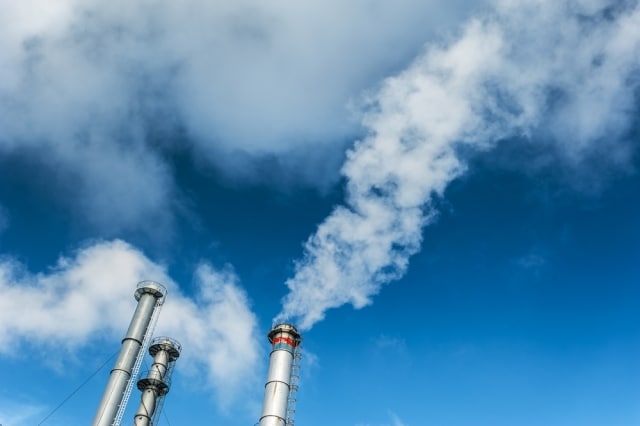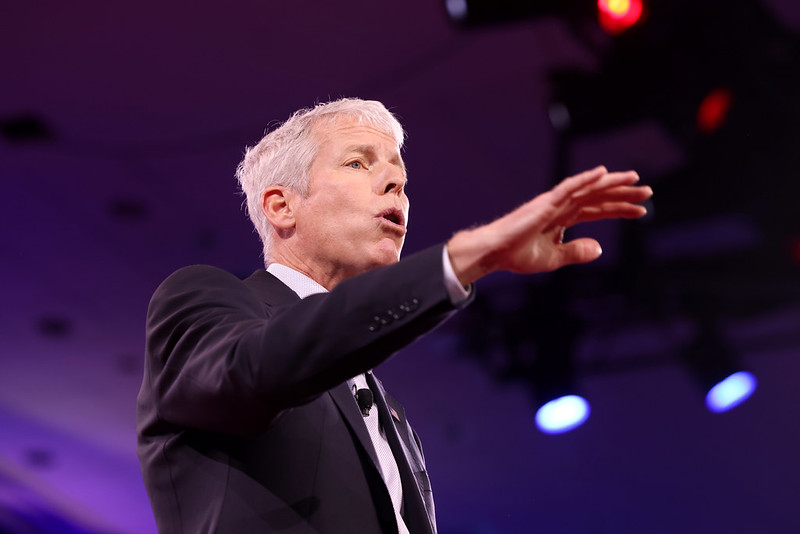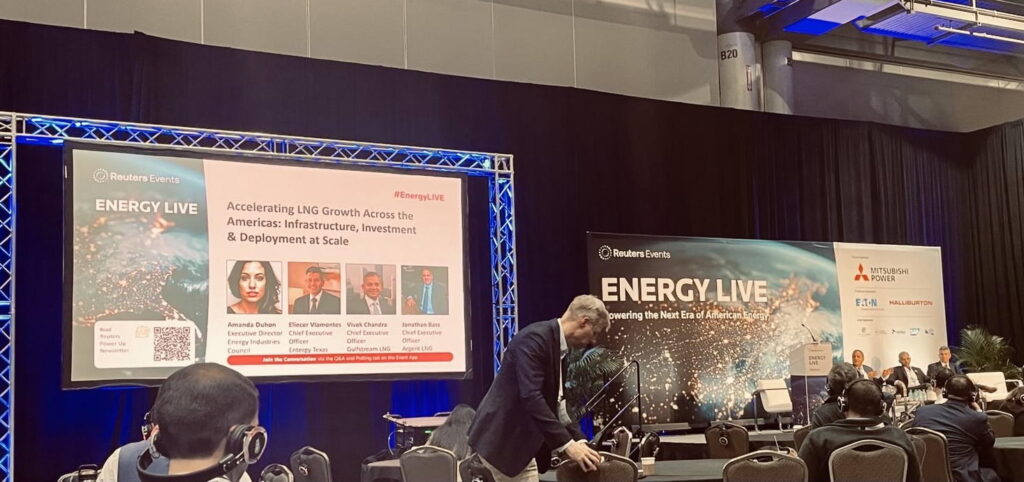Just how bad is natural gas for the climate?
A lot worse than previously thought, new research on methane leaks concludes.
Far more natural gas is leaking into the atmosphere nationwide than the Environmental Protection Agency currently estimates, researchers concluded after reviewing more than 200 different studies of natural gas leaks across North America.
The ground-breaking study, published today in the prestigious journal Science, reports that the Environmental Protection Agency has understated how much methane leaks into the atmosphere nationwide by between 25 and 75 percent — meaning that the fuel is far more dangerous for the climate than the Obama administration asserts.
The study, titled “Methane Leakage from North American Natural Gas Systems,” was conducted by a team of 16 researchers from institutions including Stanford University, the Massachusetts Institute of Technology and the Department of Energy’s National Renewable Energy Laboratory, and is making headlines because it finally and definitively shows that natural gas production and development can make natural gas worse than other fossil fuels for the climate.
The research, which was reported in The Washington Post, Bloomberg and The New York Times, was funded by a foundation created by the late George P. Mitchell, the wildcatter who first successfully drilled shale gas, so it would be hard to dismiss it as the work of environmentalists hell-bent on discrediting the oil and gas industry.
The debate over the natural gas industry’s climate change effects has raged for several years, ever since researchers from Cornell University stunned policy-makers and environmentalists by warning that if enough methane seeps out between the gas well and the burner, relying on natural gas could be even more dangerous for the climate than burning coal.
Natural gas is mostly comprised of methane, an extraordinarily powerful greenhouse gas, which traps heat 86 times more effectively than carbon dioxide during the two decades after it enters the atmosphere, according to the Intergovernmental Panel on Climate Change, so even small leaks can have major climate impacts.
The team of researchers echoed many of the findings of the Cornell researchers and described how the federal government’s official estimate proved far too low.
“Atmospheric tests covering the entire country indicate emissions around 50 percent more than EPA estimates,” said Adam Brandt, the lead author of the new report and an assistant professor of energy resources engineering at Stanford University. “And that’s a moderate estimate.”
The new paper drew some praise from Dr. Robert Howarth, one of the Cornell scientists.
“This study is one of many that confirms that EPA has been underestimating the extent of methane leakage from the natural gas industry, and substantially so,” Dr. Howarth wrote, adding that the estimates for methane leaks in his 2011 paper and the new report are “in excellent agreement.”
In November, research led by Harvard University found that the leaks from the natural gas industry have been especially under-estimated. That study, published in the Proceedings of the National Academy of Science, reported that methane emissions from fossil fuel extraction and oil refineries in some regions are nearly five times higher than previous estimates, and was one of the 200 included in Thursday’s Science study.
EPA Estimes Far Off-Target
So how did the EPA miss the mark by such a high margin?
The EPA’s estimate depends in large part on calculations — take the amount of methane released by an average cow, and multiply it by the number of cattle nationwide. Make a similar guess for how much methane leaks from an average gas well. But this leaves out a broad variety of sources — leaking abandoned natural gas wells, broken valves and the like.
Their numbers never jibed with findings from the National Oceanic and Atmospheric Administration and the U.S. Department of Energy, which approached the problem by taking measurements of methane and other gas levels from research flights and the tops of telecommunications towers.
But while these types of measurements show how much methane is in the atmosphere, they don’t explain where that methane came from. So it was still difficult to figure out how much of that methane originated from the oil and gas industry.
At times, EPA researchers went to oil and gas drilling sites to take measurements. But they relied on driller’s voluntary participation. For instance, one EPA study requested cooperation from 30 gas companies so they could measure emissions, but only six companies allowed the EPA on site.
“It’s impossible to take direct measurements of emissions from sources without site access,” said Garvin Heath, a senior scientist with the National Renewable Energy Laboratory and a co-author of the new analysis in a press release. “Self-selection bias may be contributing to why inventories suggest emission levels that are systematically lower than what we sense in the atmosphere.” (DeSmog has previously reported on the problem of industry-selected well sites in similar research funded by the Environmental Defense Fund.)
Worse than Coal?
There was, however, one important point that the news coverage so far missed and that deserves attention — a crucial point that could undermine entirely the notion that natural gas can serve as a “bridge fuel” to help the nation transition away from other, dirtier fossil fuels.
In their press release, the team of researchers compared the climate effects of different fuels, like diesel and coal, against those of natural gas.
They found that powering trucks or busses with natural gas made things worse.
“Switching from diesel to natural gas, that’s not a good policy from a climate perspective” explained the study’s lead author, Adam R. Brandt, an assistant professor in the Department of Energy Resources at Stanford, calling into question a policy backed by President Obama in his recent State of the Union address.
The researchers also described the effects of switching from coal to natural gas for electricity — concluding that coal is worse for the climate in some cases. “Even though the gas system is almost certainly leakier than previously thought, generating electricity by burning gas rather than coal still reduces the total greenhouse effect over 100 years, the new analysis shows,” the team wrote in a press release.
But they failed to address the climate impacts of natural gas over a shorter period — the decades when the effects of methane are at their most potent.
“What is strange about this paper is how they interpret methane emissions: they only look at electricity, and they only consider the global warming potential of methane at the 100-year time frame,” said Dr. Howarth. Howarth’s 2011 Cornell study reviewed all uses of gas, noting that electricity is only roughly 30% of use in the US, and describing both a 20- and a 100-year time frame.
The choice of time-frame is vital because methane does not last as long in the atmosphere as carbon dioxide, so impact shifts over time. “The new Intergovernmental Panel on Climate Change (IPCC) report from last fall – their first update on the global situation since 2007 – clearly states that looking only at the 100 year time frame is arbitrary, and one should also consider shorter time frames, including a 10-year time frame,” Dr. Howarth pointed out.
Another paper, published in Science in 2012, explains why it’s so important to look at the shorter time frames.
Unless methane is controlled, the planet will warm by 1.5 to 2 degrees Celsius over the next 17 to 35 years, and that’s even if carbon dioxide emissions are controlled. That kind of a temperature rise could potentially shift the climate of our planet into runaway feedback of further global warming.
“[B]y only looking at the 100 year time frame and only looking at electricity production, this new paper is biasing the analysis of greenhouse gas emissions between natural gas and coal in favor of natural gas being low,” said Dr. Howarth, “and by a huge amount, three to four to perhaps five fold.”
Dr. Howarth’s colleague, Prof. Anthony Ingraffea, raised a similar complaint.
“Once again, there is a stubborn use of the 100-year impact of methane on global warming, a factor about 30 times that of CO2,” Dr. Ingraffea told Climate Central, adding that there is no scientific justification to use the 100-year time window.
“That is a policy decision, perhaps based on faulty understanding of the climate change situation in which we find ourselves, perhaps based on wishful thinking,” he said.
For its part, the oil and gas industry seems very aware of the policy implications of this major new research and is already pushing back against any increased oversight of its operations.
“Given that producers are voluntarily reducing methane emissions,” Carlton Carroll, a spokesman for the American Petroleum Institute, told The New York Times in an interview about the new study, “additional regulations are not necessary.”
Photo Credit: “White Smoke from Coal-Fired Power Plant,” via Shutterstock.
Subscribe to our newsletter
Stay up to date with DeSmog news and alerts






